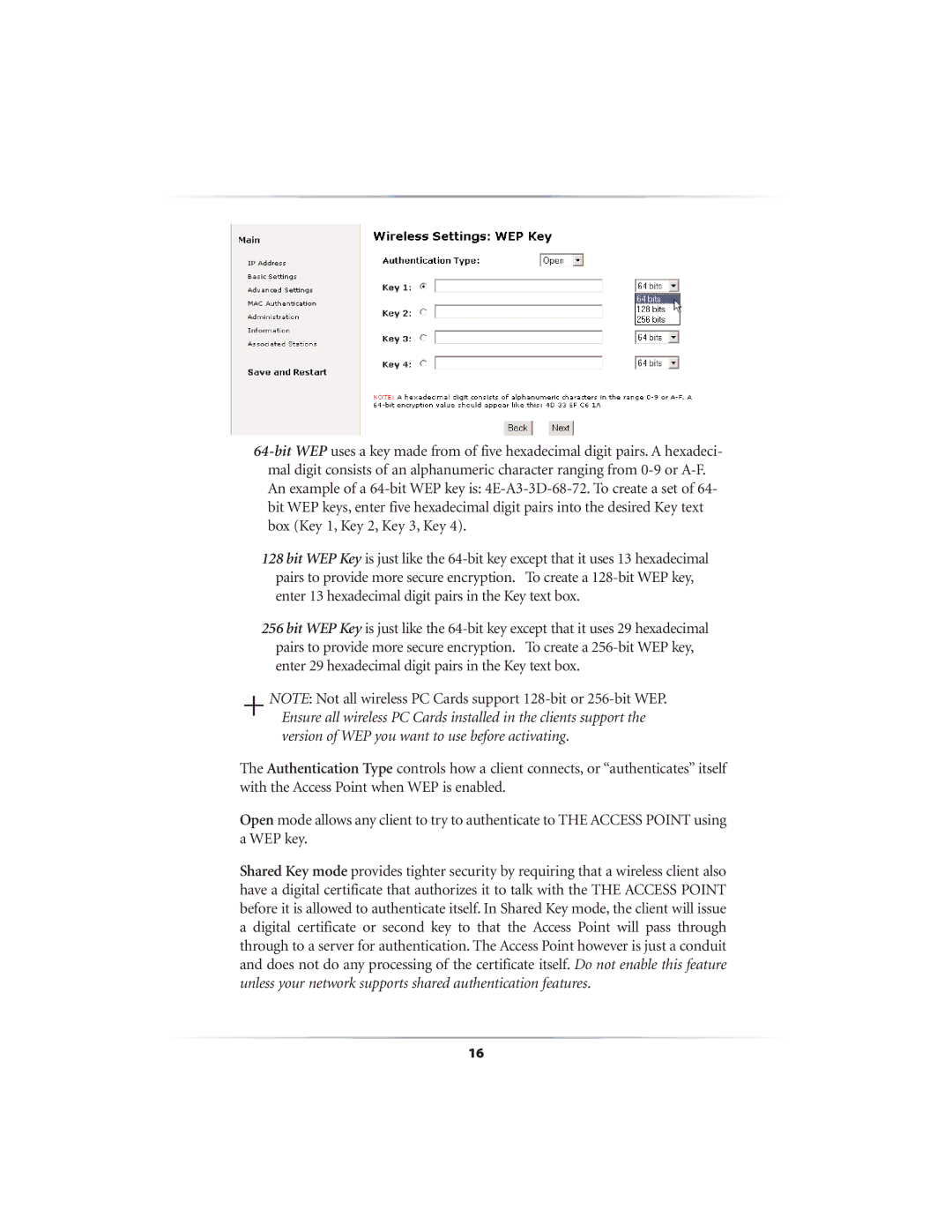
128 bit WEP Key is just like the
256 bit WEP Key is just like the
+NOTE: Not all wireless PC Cards support
The Authentication Type controls how a client connects, or “authenticates” itself with the Access Point when WEP is enabled.
Open mode allows any client to try to authenticate to THE ACCESS POINT using a WEP key.
Shared Key mode provides tighter security by requiring that a wireless client also have a digital certificate that authorizes it to talk with the THE ACCESS POINT before it is allowed to authenticate itself. In Shared Key mode, the client will issue a digital certificate or second key to that the Access Point will pass through through to a server for authentication. The Access Point however is just a conduit and does not do any processing of the certificate itself. Do not enable this feature unless your network supports shared authentication features.
16
